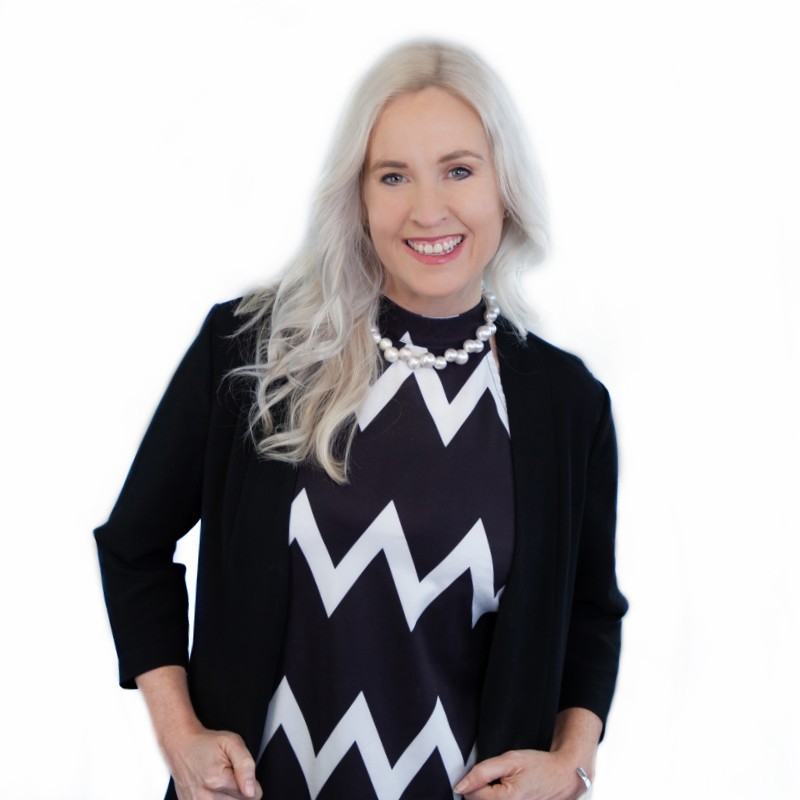Tracey Mikita is almost always on top of things. She’s the Chief People Officer for Vena Solutions, based out of Toronto.
She was preparing for ten new people to join as a cohort one Monday. The Thursday before, the entire company went remote due to COVID-19. She had two days to figure out how to do it all remote.
Remote employees aren’t new to Vena. However, there has always been a HQ to base everything out of.
In a day, Tracey realized that not only onboarding, but the entire cultural experience of people working at Vena had to be completely digital.
Not everyone has the same experience
Several months into the pandemic, Tracey says their culture hasn’t changed much. They are still value-driven and keep those core values in the spotlight. However, there have been some changes in how they are implemented.
Tracey said that the biggest shift has been recognizing that not everyone has the same experience.
Some people are really enjoying working from home. Some are really struggling. The in-office culture for Vena was really strong, so many people miss that a lot. But people who were already remote are suddenly feeling more valued.
The key for Vena has been increasing empathy. No matter what you are going through, the team should be there to help you through it.
Onboarding is the first introduction to culture
Vena takes onboarding very seriously, so when it went entirely to digital, Tracey pulled leaders in from across functions to a design thinking session to rebuild the onboarding process from the ground up.
While some of their adaptations merely converted the physical to digital, they were also able to add in a lot of new creative things.
They’ve new onboarded a few dozen people over the last several months. The feedback has been very good from people coming in, and they’ve been able to make some changes.
For example, Tracey’s team was really worried about getting people all the right hardware on the first day, but even when things came a little late, it worked out fine because most people had their own personal devices to use at the start.
One big change they made was moving from a heavily scheduled first few days to a more relaxed and asynchronous schedule. They wanted to demonstrate that they were flexible from the very beginning.
How do you show values in a digital environment?
Tracey and the team at Vena weave their values into everything they do. They have increased their communication and recognition of others in the last few months. They switched from a monthly town hall to a weekly call to make sure everyone felt informed.
Tracey says that accepting and acting on feedback is key not only to improving her processes, but showing the culture. This is just as important and easy to execute in a digital environment.
Tracey sees a Level 5 digital workplace as a blend of in-person and digital, taking the best of both. Vena’s future is based in digital with touches of in-person.
Today we have a very special guest. We’re talking to Tracey Mikita. She is the chief people officer at Vena Solutions. Hi, Tracy. How are you doing?
Hey, Neil. I’m great. Thanks for having me on the show.
It’s exciting to have you on. I want you to first just introduce yourself. Let us get used to who you are.
Perfect. So as you said, my name is Tracey Mikita. I am the chief people person here at Vena and have been with the company for about the past three years now. Prior to joining Vena, I actually had the luxury of working in a variety of industries throughout my career. So I’ve done everything from financial services to retail to manufacturing, and have now landed in technology and I think found the spot I really love. And I’ve spent most of my career working in people in culture, but have also had the opportunity through my career to also work in services and in operations. And I think that’s really allowed me to build a lot of empathy and understanding of how the whole business works. So I encourage folks to try things outside of their functional area to really gain that business acumen. So that’s a little bit about me.
So if you didn’t do chief people stuff, what would you do?
I think I’d probably be an ops person. I really love the process, seeing how it all fits together. So I definitely think I would probably fall under that functional area.
When you compare what you’re doing at a technology company versus what you did in retail and other work that you were in, what do you find are the big differences? I mean, we’re talking about digital workplaces. But many storefronts are much more digital than tech companies in some ways in the way they handle the internal operations of what’s going on. So, as you’ve made this transition to a tech company, do you find that it’s been like, wow, everything’s tech enabled, and it’s like a different level, where do you find it’s pretty similar?
I’d say it’s more tech enabled, obviously, in tech. But when I think about the comparison between tech and retail, retail needs to be pretty nimble. And sometimes the bigness of some of the employers I worked with makes it hard to be nimble. But in order to be successful, they’re monitoring their sales daily. They are hourly looking at how business is operating. And I think definitely that nimbleness, being agile in tech is something that I found has been quite different. And then also just the people. Obviously working in tech, it is much more millennial focused culture than maybe what you would find in retail or some of the more corporate environments that I’ve worked with. And people have high expectations of what you are going to deliver as an employer. And that makes it a lot of fun.
You use the C word, the culture word. We’re talking about digital workplaces, we’re talking about how culture changes when you enter into more of a digital atmosphere. So what’s been your experience in terms of usually the chief people person is considered the point person, if the culture goes bad, we go to you, right? Which is probably a misunderstanding of that. But how would you describe the culture of a digital workplace?
I don’t know that the culture of a digital workplace is truly that different than what it was maybe here at Vena prior to COVID-19 happening. We still live and abide by the values we have as an organization. Here at Vena, we have four values which we call our core values. And that is customer trust, one team, respect and authenticity, and execution excellence. And we are abiding by those, whether we are in the office together or whether we are working digitally. So, I’d say those core values are still at the forefront. Definitely things like communication and empathy and the ability to be flexible, we have over indexed on that culturally as we’ve moved to this digital workspace. So definitely more communication, trying to be empathetic and flexible and understanding that not everyone has the same circumstance at home. And how do we support people who maybe are dealing with their young kids versus those who maybe have a sick parent that they’re worried about? That empathy piece and being flexible to support them, we’ve definitely over indexed on here as we’ve gone from this in office to digital shift.
Let’s talk about specifically onboarding because I feel like that’s an area, obviously, you’re in the world of HR, you’re also a process minded person. You’re also thinking about culture, which I feel like onboarding is like the perfect use case to figure out, alright, let’s figure out how to do this right. You’ve got the whole world open to you. You’ve recruited a great candidate. They’ve accepted the offer. How do you bridge that gap? How do you introduce on ramp that person into your culture? What are some of the things you guys are doing at Vena?
I’ll take a step back. When I arrived at Vena three years ago, we introduced an onboarding program at that point, but it was very functionally focused. So we had people come in. It was an in office experience and people from every function came in and talked about what their function delivered. We didn’t really talk too much at that point about culture. We had evolved over the next couple of years to really start to pull in more cultural pieces. But I say over the last six to nine months is when we’ve really taken a hard look at our onboarding program. That really aligns with when we really started to ramp up our hiring. So we were bringing in a lot more people. And it was a lot harder to onboard them effectively without those processes in place. A really neat thing that we did late last year was to do a design thinking process with a cross functional group across the organization. So we pulled in on almost all of our leaders into a number of different design thinking sessions and really spent time looking at four different parts of the onboarding process. So that pre board, so you haven’t actually started with Vena yet, but we want you to start to feel in connection. The second part was your first couple of weeks at the organization, then transitioning into your first three months, and then through your first year, what does that process look like? And what could we do differently and more effectively to really make it a much more valuable process for new hires, and one where they not only ramped quickly, but really feel engaged and part of the culture quickly. We had been doing all that work, and then COVID-19 hit, and literally, we made the decision, I think on a Thursday that we were going to shut down the office the following Monday. We had 10 new hires starting that day. It was okay. We got to figure this out. We made the decision very quickly that we weren’t going to push out hiring or push out those start dates for those people. We just took the program that we had, and over the course of a few days, really started to make it into something that would work completely remotely and completely digitally. And I think that first group, that May 16 cohorts may not have been perfect for them, but we have definitely come a long way. We’ve on boarded over 30 people over the past couple of months, and we actually do surveying as part of the onboarding process and our survey results have been really great for those new hires. We’re looking at everything from engagement, initial engagement and connection to the company to how they got on board at functionally, to what they thought of their first few days. And we’ve seen some really positive results, but also some really great feedback. And we’ve been trying to take that feedback and run with it to make the process even more effective.
Walk me back to that Thursday, when you hear that, okay, this is all going to be remote, and you got 10 people that you’re trying to join. What’s one thing that you were freaking out about at that moment that really didn’t end up being that big of a deal?
I think we were freaking out about technology. And we did not have a great process to get people actually, there weren’t computers. It was as simple as that. We took a step back and said, alright, well, they may not have a work computer on day one, but everybody has something they can connect with. And so how do we make sure that what they have in place at home can get them connected for those first few days until we actually can get their equipment shipped out to them and the setup done properly. So I think that was one where there was a lot of worry. But it ended up working itself out because of how connected we are as a world today.
And then on the flip side, what’s one thing you feel like you didn’t worry enough about or that caught you by surprise?
There’s definitely been some feedback that we have received about those initial couple weeks in the onboarding process. One of the things we did was, we thought to ourselves, okay, we’re going to really structure this process for people so that for their first two weeks, they know exactly what they’re doing pretty much like from 9 to 5 each day, whether it be product training, or whether it be cultural training, whether it be departmental training, and that works for a lot of people and they’re glad to be busy if they don’t have any home commitments. But we definitely ran into some feedback from folks that, I have young children at home, and I can’t be booked up for eight complete hours in a day because my husband, my spouse and I, my partner and I, we’re shifting off looking after the kids and I just need some more flexibility. That’s one of the actual learnings that we’ve taken away and started to, as part of our pre boarding process, actually ask folks like, what does your situation look like while you’re working at home? How can we be supportive in building your first couple weeks onboarding process so that you are not overwhelmed, you are not forgetting about your children, letting them run wild? And that you feel like you are having a good onboarding experience with the company. So that is a big shift we’re working on now to try to make that a better experience for everybody because every situation is different.
Yeah, that’s true. I feel like when we explore the digital workplace, you end up with a lot of options for people. There’s not going to be one solution that works for everyone. You’ve got to be able to provide lots of different things, right?
Flexibility definitely is key.
When we look at as companies transition to digital workplaces and make this move, a lot of times we say, okay, that transition from level one to level two is just trying to replicate everything you were doing into a digital environment, which is sometimes a big thing to jump over. But oftentimes, it’s not as bad as people think. But then you start to move forward and move toward this level three stage where you start to realize there are some inherent advantages of digital that you didn’t have before. So what are some things that you feel like, wow, now that we’re focused on a digital onboarding for people as they go through, what are some things that you are starting to see, hey, we can really leverage this, we can take advantage of this and make an even better experience than it was before?
That’s a great question. I definitely think for people who were remote previously, the new onboarding experience is a way better experience for them. So just to give you some context, the way our onboarding program works as every two weeks we do a new onboard of hires. And most of those people were coming into the Toronto office and so they got this in person experience. But remote folks, they may have come in on day one, or it may have been a few weeks before they actually got into the office. And so, I think definitely an advantage of going fully remote is everybody is getting the exact same experience. And on day one they’re getting that experience. So I think that’s definitely been an advantage. Just the flexibility that is offered through going digital, there’s definitely much more flexibility. And I think just being nimble and being able to shift quickly. We’ve definitely seen an advantage in that, that something isn’t working and what we’re doing and we’re able to connect to really quickly shift and move it, move it and work with it in another way than we previously did.
Let’s talk a little more about culture, specifically trying to get someone, you guys have these four really defined values that are part of what you do. There’s obviously behaviors that are running through the office. What is your philosophy when it comes to training a new person who’s just joining the company that says, look, this is who we are. These aren’t just posters up on the wall. But we do things differently because we value these things. How do you translate that to somebody that’s new? How do you get them to really feel those values, especially in a digital environment?
I think definitely we weave them into everything we talk about. Prior to day one, when we’re sharing onboarding information with folks, they’re getting information on the values through that process. On day one when they walk into their digital onboarding, every presenter, every part of that first few days experience, we’ve taken our core values and really tried to weave them in to the language that we use, the information that is shared, when we talk about how we recognize people and recognition programs that we’ve had. We’ve weaved pieces of our core values into each of those. I think in the first few days, they’re definitely getting that. A good example, we have transitioned from a monthly townhall to a weekly townhall now that we’ve gone digital just to over communicate, and we are constantly every week talking about something that is core values related, whether it be our recognition programs, whether it be our new Viki that we just launched, which is our online wiki or communication portal, and why transparency is so important as part of our values. So on a weekly basis, we’re weaving pieces in that are really focused on the values and trying to ensure that people experience as much as possible, what they may have gotten through the office experience, but in more of a digital forum.
When I think about onboarding, I think about, especially in the bit about culture, it’s almost like you’re making promises to these new candidates who have come in, new people who have joined and said, this is who we are, we promise to act like this. What are some ways that you can do that in a digital way, in a way that you communicate to them said, this is who we are, and then follow up on those promises and say, from your entire experience from day one joining this company, we’re going to be like this. How have you guys baked in those promises? And how do you fulfill them even in some of these people who’ve been with you for two months now?
I think definitely we over communicate. And then we ask for feedback. And so we have feedback loops that are pretty continuous here at Vena. They’re being provided with the opportunity to provide feedback right from that day one Vena 101 experience 60 days in, and then on a quarterly basis, where we’re asking for their feedback through our Vena life survey process. And I think being able to see that feedback. And then, I always say to our people leaders, it’s great to ask for feedback. But if you don’t do anything with that, and you don’t actually communicate back to your folks that you’ve seen the feedback and you’ve read the feedback and develop action plans from it, you’re really going to lose the trust and the credibility that you need to have as a leader and that we need to have as an organization. So I would just really highlight that feedback mechanism and making sure that you ask for it, but then also take action on it.
Tracey, let me close up with this question. Let’s look into the future. Let’s look into how companies will do onboarding five years from now. And let’s say it’s just at a different level than what’s going on at this point. What do you feel like that would look like? What’s the next level of onboarding that you guys hope to reach? And both in terms of practices you do and technology that may not be available yet? Like what would you hope to be the next level for you?
Oh, that’s a great question. Definitely I think there’s going to be a mix between digital and in person for us at Vena. I think we truly are a very collaborative team focused environment. And while you can get much of that digitally, I think there is parts of that that are really beneficial when you get to work side by side or collaborate side by side in person and really get to read their body language and see what it’s like in the office and that type of thing. So I truly believe our future state will be digital onboarding with touches of in person experience no matter where you’re based. And I think that for us, other companies may go completely digitally. But I think for us, it will be a hybrid approach that really is reflective of who we are and what we’re all about.
Tracey, it’s been fun to chat with you, learn more about how real companies are adapting to these changes and are building their own digital workplace and different things. Where can people go to learn more about Vena and the stuff you guys are doing?
There’s a couple different places they can go. We have obviously our website venasolutions.com. We just a couple weeks ago did a great virtual conference and they can go check out that and learn a lot about the company that’s at plantogrow.com. And we also have a really active Instagram, Twitter, LinkedIn pages that really showcase what the culture at Vena looks like, glass doors and other spots. So I’d encourage people who want to understand the culture to check out some of our social sites and they’ll definitely get a flavor of what we’re all about by going there.
Great. Thanks, Tracey, for being on the show and sharing your experiences with us and we look forward to being in touch later.
Thanks so much.
As Chief People Officer, Tracey is spearheading the development and execution of Vena’s people strategy, culture initiatives and employment brand evolution.
Tracey is passionate about delivering an amazing candidate and employee experience that supports Vena’s business strategy and growth plans. She has experience across a variety of industries, including both high-growth technology and large corporate organizations. Most recently Tracey was Vice President of Human Resources at Toronto-based software company, FreshBooks. Outside of work, you’ll find Tracey at the ball park, hockey rink or ski hill with her boys or reading a good book!












